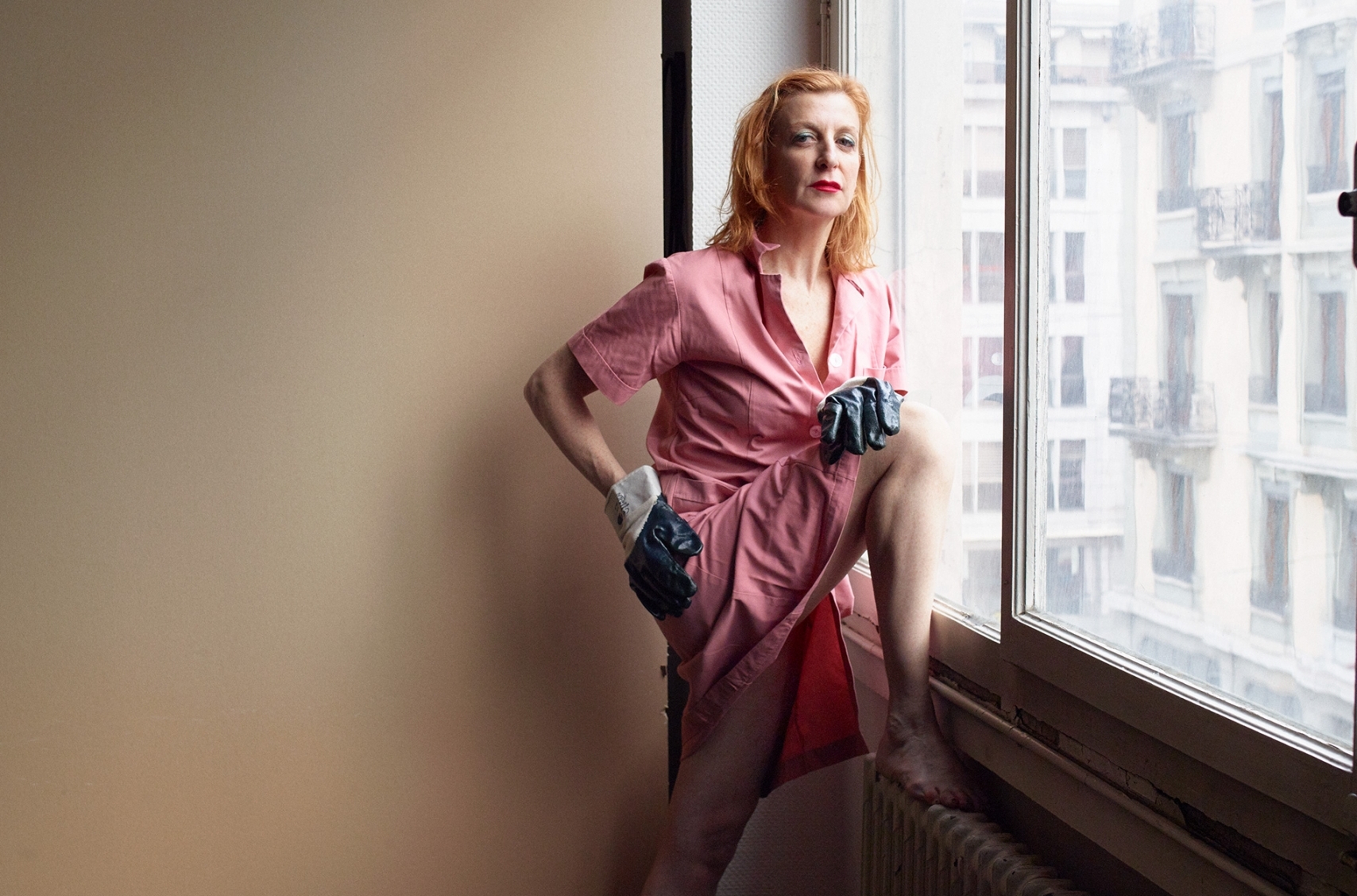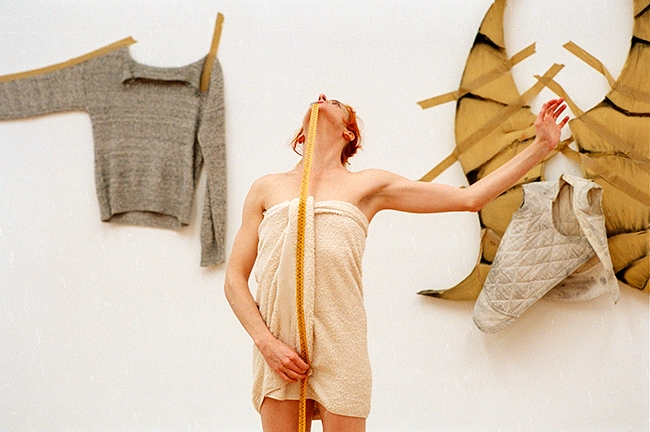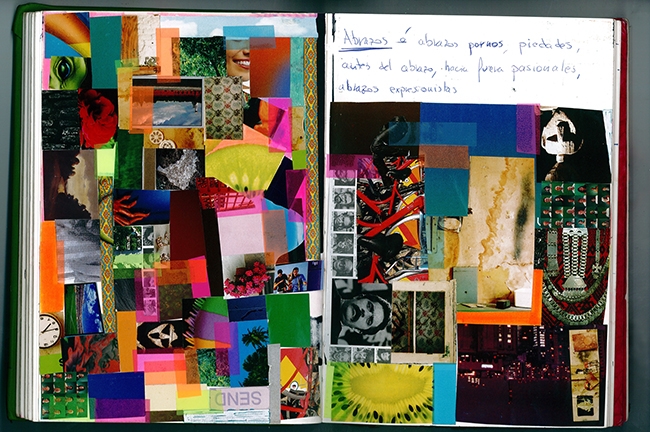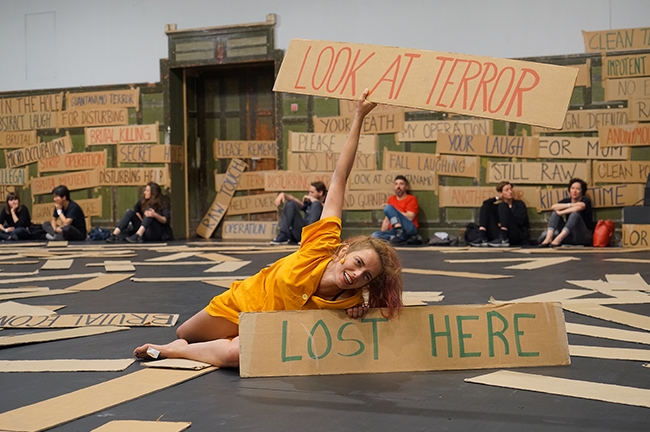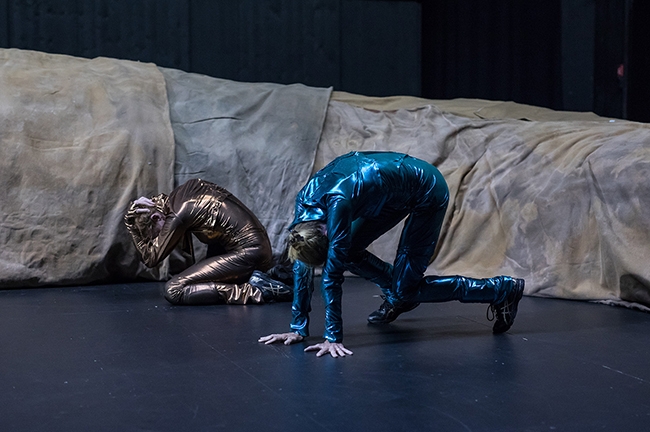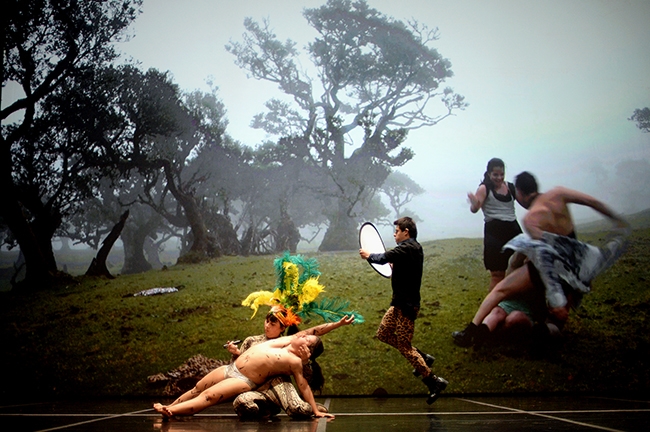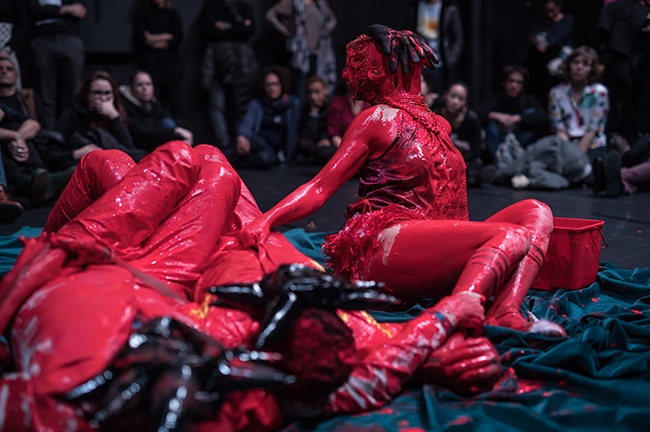Certain portraits reveal metamorphoses more than they do fix identities. After hosting her work on five separate occasions since 2004, the Festival d’Automne à Paris pays homage to this indomitable conjurer of concepts. A journey through six hybrid projects will, rather than serving as an edifying experience of some sort, invite us to explore a landscape in constant mutation. Rigorous and extravagant in equal measure, La Ribot, a major figure on the visual arts-inspired dance scene, has developed a rhizome-like body of work the radical nature of which owes much to her way of looking at art at root level, the place where body and idea come into contact with each other in complete freedom. Her performative and visual work, at the crossroads between performance art, video and live installation, functions via a process of drifts and detours, following a wandering path the shapes of which defy all definition. A child of the Spanish Movida, La Ribot avoids inertia of all kind through constant movement. Sensing that the dance scene in Spain was on the point of stagnation, she left her native country at the end of the 1990’s and set up her base in London, and then Geneva. Since that time, she has been touring her work across the globe. This state of constant movement imbibes her work with a jerky, restless vocabulary of its own; executed with precision, this vocabulary sets the rhythm for her critique of the modern world. Switching between absurd gestures to dazzling concepts, her work shifts the boundaries of thought, increasing its mobility. If there is any guiding principle at all in her work, then it is this idea that nothing should be taken for granted. Nothing is fixed.
Influenced by the visual arts as much as by the history of dance, theatre and performance, she was one of the first choreographers to affirm that her work belonged as much in museums and galleries as it did in other spaces. By taking over these non-traditional venues, which she viewed as pure performance spaces, she proceeded to a complete overhaul of the norms of onstage representation. In her eyes, placing it on a horizontal plane effectively did away with the various hierarchies that habitually organise the audience-performer relationship, and put on an equal footing all the visual and dramaturgical elements that organise its actions. Indeed, the bodies, images, sounds, texts and objects that feature in her pieces are placed in indiscriminate spaces, the aim of which is to scramble audience expectations and references. Wholly emblematic of the transdisciplinary nature of her work is the Distinguished Pieces series. Initiated in the early 1990’s, this signature project has given rise to a wide range of works in short piece format, numbered and assembled in series. Her intention is to produce one hundred of them.
Panoramix, a show-performance lasting three hours scheduled as part of the Portrait comprises a rearrangement of the first thirty-four pieces (1993-2000), whilst Another Distinguée brings together the eight pieces that together make up the fifth series (2016). Together, they provide us with two opportunities to watch this free-thinking artistic wizard mix up the strategies of the performing arts with those of contemporary art. Providing this plasticity with venues in which it can be expressed, the Festival and its partners will be honouring her visual work by means of an exhibition, Se Vende. Divided into two consecutive parts, this exhibition will give visitors not only the opportunity to view her installation and video work but also her artist’s notebooks, many of which will be on display for the first time.
In essence, dance represents a point of departure more than a finality. She uses it as the basis for probing into the contemporary context, from the standpoint of its political, social, intellectual and aesthetic dimensions. In this respect Laughing Hole, which expresses her anger at the nonsensical nature of Guantanamo, is the most explicitly political of the different works. Going beyond satire, its contribution to the world is the way it makes the body into a means of embodied critique. As such, the body becomes a means of leverage for the emancipation of women and all other minority forms. Happy Island, made in collaboration with handicapped dancers, is the perfect illustration of this readiness to take a fresh look at dance, away from the well-trodden, institutionalised paths. Please Please Please, her latest work, developed in conjunction with Mathilde Monnier and Tiago Rodrigues centres around this same focus on theatrical conventions, undermining tradition and virtuosity in order to make room for new, unique, contagious occurrences. In La Ribot’s hands, this indiscipline takes on the value of a method. She uses it to create a distance with technical and historic referents, thereby unleashing a physicality of a base and vile nature, which shies away neither from what it lacks in formal terms nor its organic animality. This operation in minimalist reduction is carried along by the complete freedom of tone with which La Ribot is associated, and her acerbic wit. The latter, not devoid of tragic undertones, makes her deconstructive vision of the body bearable, joyous.
La Ribot is associate artist at the CND Centre national de la danse
The La Ribot portrait is presented with support from the Swiss cultural foundation Pro Helvetia, King’s Fountain and the Fondation d’entreprise Hermès as part of its New Settings program.
